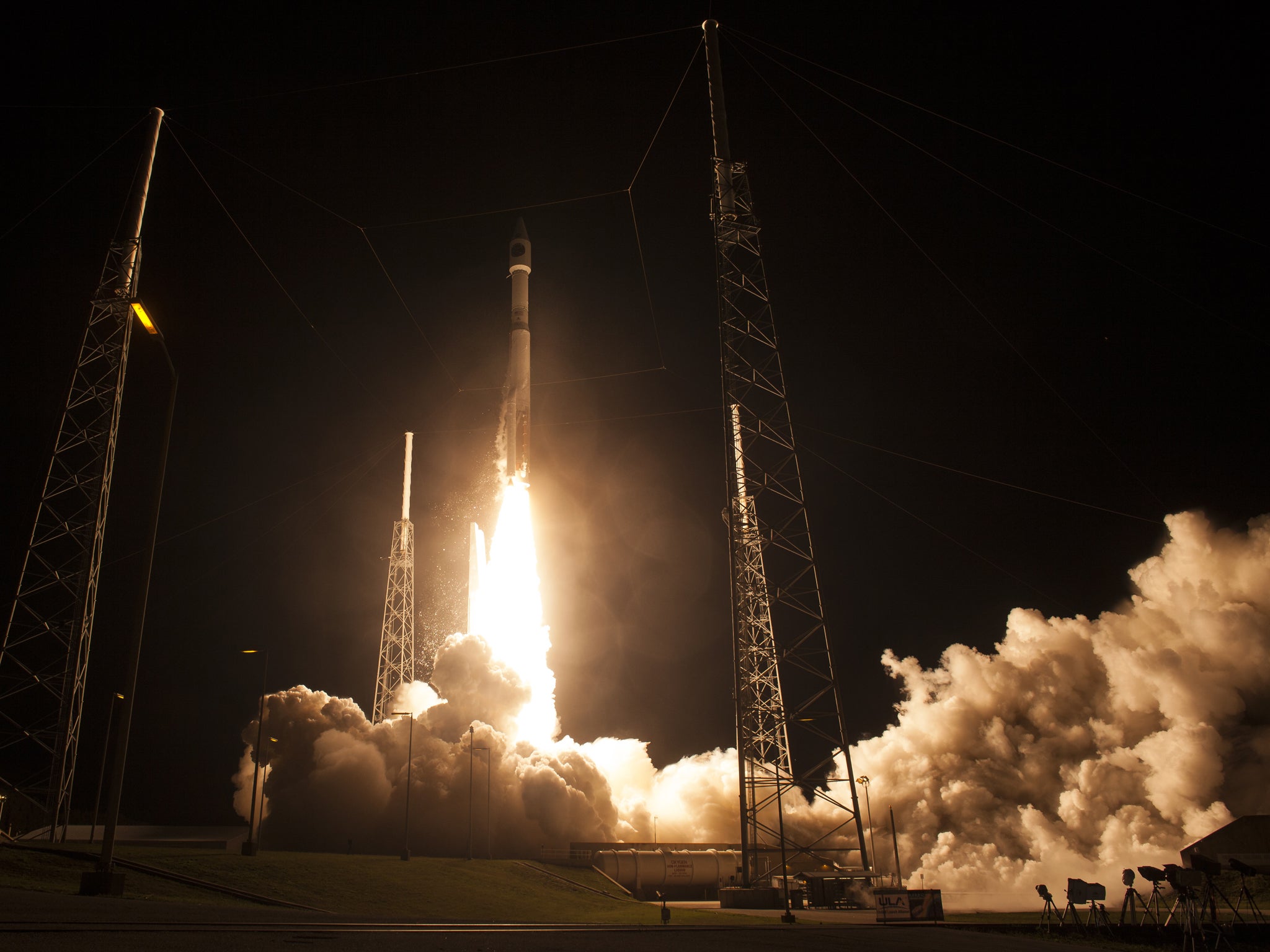Nasa launches spacecraft into magnetosphere hoping to solve mysteries of space weather
Interactions among the magnetic fields of space can create space weather, disrupting power and communications on Earth

Your support helps us to tell the story
From reproductive rights to climate change to Big Tech, The Independent is on the ground when the story is developing. Whether it's investigating the financials of Elon Musk's pro-Trump PAC or producing our latest documentary, 'The A Word', which shines a light on the American women fighting for reproductive rights, we know how important it is to parse out the facts from the messaging.
At such a critical moment in US history, we need reporters on the ground. Your donation allows us to keep sending journalists to speak to both sides of the story.
The Independent is trusted by Americans across the entire political spectrum. And unlike many other quality news outlets, we choose not to lock Americans out of our reporting and analysis with paywalls. We believe quality journalism should be available to everyone, paid for by those who can afford it.
Your support makes all the difference.Nasa launched four spacecraft last night, sending them far into the “magnetosphere”, a mission that could help solve the mysteries of space weather.
An Atlas rocket, carrying four of the “Magnetospheric Multiscale” spacecraft, took over last night and were pushed into their orbit four hours later. They will now fly around in the magnetosphere — where the Earth’s magnetic force is in space — in an oblong orbit, in an attempt to map out and understand the way magnetic fields interact.
Together they will study magnetic reconnection — the ways that the magnetic fields of the Earth, sun and other space objects come together and break apart, releasing huge amounts of energy. That process then drives the aurora, as seen in the northern lights, and solar storms that disrupt power and communications on Earth.
Nasa hopes to use the data gathered by the spacecraft during their $1.1 billion mission to better understand that weather.
"We're not setting out here to solve space weather," said principal investigator Jim Burch, from the Southwest Research Institute in San Antonio. "We're setting out to learn the fundamental features of magnetic reconnection because that's what drives space weather."
Each observatory resembles a giant octagonal wheel, stretching more than 11-feet across and 4-feet high, and weighing 3,000 pounds each. Numbered and stacked like tires on top of the rocket for launch, the fourth one popped free first more than an hour after liftoff, followed every five minutes by another.
Once the long, sensor-laden booms are extended in a few days, each spacecraft could be much bigger than a football field.
Join our commenting forum
Join thought-provoking conversations, follow other Independent readers and see their replies
Comments